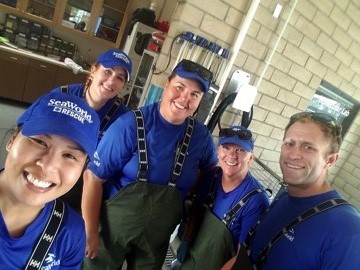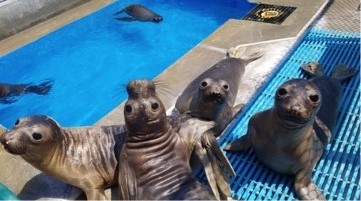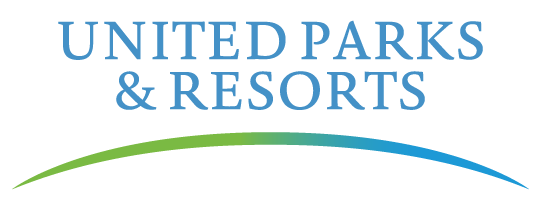4 Things I Learned From The Rescue Team
July 19, 2017
This one’s personal.
First off: I never, ever forget how extremely fortunate and lucky I am to work alongside SeaWorld San Diego’s Rescue Team. I love sharing their stories of rescue, rehabilitation and return with fans just like you. Honestly, if there’s something that’s truly real amazing, it’s this team. It’s easy to see.

I consider Jody, the team’s spervisor and stranded animal coordinator, as one of my mentors. Despite her impressive SeaWorld career caring for many different types of animals, she is one of the humblest people you’ll ever come across. If you’ve had the chance to meet her, you’ll know what I mean. Jody doesn’t just give it her all; she goes beyond and operates at 150 percent, always. The team is the same way.
Because of how much the Rescue Team has and continues to inspire my everyday life, I wanted to give back by way of helping out in whatever way I can. I asked Jody if I could join their team to experience what their day-to-day is like.

All suited up
Here’s what I learned.
1. They really are the definition of “team”.

The Rescue Team is comprised of a main group of senior animal care specialists, just like Jody and Jen. During their busy season, they’re joined by seasonal animal care specialists like TJ and Nick who assist with their daily duties of rehabilitating rescued animals. One of the things I admire about the team is how much they have each other’s backs. It’s not about the “me” for them; it’s about the animals and the “we”.
2. It’s a LOT of work.
I worked with the team on what they considered as one of their slower days because they didn’t have as many animals on site, but even then, there was a lot of work to be done. After reviewing voicemails received from the public on animals that might need some assistance, and reviewing the status of the animals, the team starts the day off with their first round of feeds. There were about 20 animals on site the day I helped.

Preparing for the first feed of the day
Then, it’s off to cleaning all eight rehabilitation areas (or Qs, as they call them). The pool levels have to be lowered, and the mats and areas rinsed, scrubbed and rinsed again. Also, if the animals are in bad shape, it might mean even more scrubbing, if you catch my drift.
Eight Qs + rehabilitating marine animals = lots of scrubbing and washing

Elephant seal pups sunbathing while waiting for their area to be cleaned
Since there are eight Qs, this has to be done eight times. This is why team work is so important.
3. It is TOUGH.
One thing to keep in mind is that these rescued animals cannot communicate to the team what’s causing them pain. These are also injured wild animals who do not know that they’re being nursed back to health, which can be challenging to the team at times.
Throughout the day, Jody and Jen attempted to feed fish to an elephant seal that was progressing to solid foods. However, the elephant seal was having trouble because its throat injury was preventing it from fully swallowing the fish whole. Jody and Jen had been honing the style that worked all weekend, only to be pushed back to square one when the seal just wouldn’t accept the food.

But did they give up? No. On the next round of feeds, they tried again, and they successfully fed it a few whole fish.
Part of the day’s responsibility was to process healthy and rehabilitated animals to be returned to the ocean the next day. I’ve often watched the team do this and thought it was easy transporting animals to the Critical Care Center to be weighed. I quickly learned that they make it look easy.
We also had to make sure that the animals that were still rehabilitating were on the path to recovery. Just like Jody and Jen with the elephant seal, there are times when the team has to intervene to ensure that the animal has a higher chance of survival in the wild. Their goal is not to bond with animals so that they do not go up to humans on the beach.


4. It is SO rewarding.
The team had recovered two long fishing hooks from its mouth the day before.

They were worried that Big Boy was declining, but after much needed rest, he became more active and started swimming in his recovery pool by the end of the day. (Update: Big Boy was returned to his ocean home a few days later for his second chance at life.)


